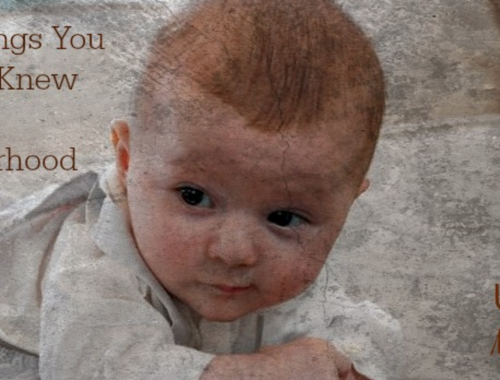 Although there are always exceptions to every rule, the majority of children are born with kind hearts and enjoy doing good things and helping people. Sure, they have their moments of selfishness, clamoring after their own and other kids’ toys, but most kids are good people that like making the world a better place. The benefits of actively fostering children’s charitable impulses are enormous. Besides helping counter the overdeveloped “gimme” impulse, it gives kids a powerful boost in self-esteem to realize they can make a difference in someone’s life. Here are some tips on kids and charity, and how to encourage a giving spirit.1. Be active in your giving. Being charitable doesn’t just mean opening a pocketbook and doling out cash or coins. But preadolescent children may have trouble understanding such an abstract concept as donating money to a worthy cause, so it’s often best to associate giving with action. Let your kids experience charity firsthand by doing things: even a preschooler can help a parent bag lunches for a soup kitchen, distribute socks to the people in a homeless shelter, or clean an elderly neighbor’s yard. And as children grow, so do their opportunities for making a difference. When choosing a project, try following your child’s lead and interests. The more you let her direct the process, the greater the involvement she’ll feel and the more she’ll learn from the experience. Suppose your 6-year-old has expressed concern that poor children don’t get enough toys. You might ask her if she can think of ways to collect and distribute toys to needy kids. Perhaps she’d like to do extra chores around the house to earn some money to buy the toys herself. Or she might suggest posting a sign in school to solicit toy donations from her classmates.
Although there are always exceptions to every rule, the majority of children are born with kind hearts and enjoy doing good things and helping people. Sure, they have their moments of selfishness, clamoring after their own and other kids’ toys, but most kids are good people that like making the world a better place. The benefits of actively fostering children’s charitable impulses are enormous. Besides helping counter the overdeveloped “gimme” impulse, it gives kids a powerful boost in self-esteem to realize they can make a difference in someone’s life. Here are some tips on kids and charity, and how to encourage a giving spirit.1. Be active in your giving. Being charitable doesn’t just mean opening a pocketbook and doling out cash or coins. But preadolescent children may have trouble understanding such an abstract concept as donating money to a worthy cause, so it’s often best to associate giving with action. Let your kids experience charity firsthand by doing things: even a preschooler can help a parent bag lunches for a soup kitchen, distribute socks to the people in a homeless shelter, or clean an elderly neighbor’s yard. And as children grow, so do their opportunities for making a difference. When choosing a project, try following your child’s lead and interests. The more you let her direct the process, the greater the involvement she’ll feel and the more she’ll learn from the experience. Suppose your 6-year-old has expressed concern that poor children don’t get enough toys. You might ask her if she can think of ways to collect and distribute toys to needy kids. Perhaps she’d like to do extra chores around the house to earn some money to buy the toys herself. Or she might suggest posting a sign in school to solicit toy donations from her classmates.
2. Teach them financial responsibility and charity all at the same time. An allowance can be as handy a tool for fostering charity as it is for teaching other aspects of money management. Some experts advise starting to give an allowance of some kinds as soon as your child starts school (or even earlier if you think he can handle it), and dividing the weekly dole into three parts, each clearly earmarked for a specific purpose: spending, saving, and sharing. Explain that the sharing portion is to be used for gifts to charity, and couple your explanation with a simple statement of your philosophy on the subject, such as “Our family believes it’s important to share our good luck with people who are less fortunate.” The exact percentage of the allowance you apportion to charity doesn’t matter; what is important is simply to incorporate giving into the child’s budget. What you encourage your child to do with the money is key too. Instead of simply giving cash to a worthy organization once he has accumulated a reasonable amount, suggest that he use the money to buy a toy for a poor child or socks for a homeless person or some other item needed by someone in serious straits. Then take him to deliver it.
3. Be spontaneous. You don’t need to set aside a special time to talk about the importance and joy of giving. Opportunities pop up all the time. Passing a homeless person on the street, for example, might be a good occasion to talk about the fact that some families don’t have enough money to pay for a place to live. Visiting an elderly or ailing relative might be the right moment to discuss how important it is to reach out to people in need. The idea isn’t just to sensitize your child to some of the pain and suffering in the world, but to give her the great gift of thinking that she has the power to help make it better.
4. Practice what you preach. As with everything else in life, kids learn best by example. You don’t have to regale your child with tales of your charitable works or keep him glued to your side while you serve meals in a soup kitchen to prove that you care too. But neither should you hide everyday acts of kindness. If you’re taking a meal to a friend who has just gotten out of the hospital, say so. If you help raise funds for worthy causes through your church, temple, or local community group, talk about it. If you give money to an organization you believe in, explain why doing so is important to you. By talking about to whom and how you give, you not only show your kids the importance of giving itself, but you’re sharing your values about the issues that matter most to your family — whether you’re passionate about supporting the arts, cleaning up the environment, assisting the elderly, or helping to alleviate poverty and homelessness. Although some parents may worry about exposing young children to painful experiences that might haunt them later, the joy inherent in giving far outweighs any sadness they may encounter. Kids can handle so much more than we give them credit for. So can moms and dads. Busy parents who have found it hard to devote time to worthy causes outside their own homes may well discover that teaching their children to give back to the community is an ideal way to get back in touch with their own charitable impulses.



[…] As part of this campaign, I was given the opportunity to donate groceries to an organization in need. There are so many, but I would like to start at the heart of my own city. After all, strong communities produce kids who thrive. The Greater Vancouver Food Bank provides assistance to over 26,500 people weekly, 20% of our members are children, 19% are seniors. (Image credit below: Greater Vancouver Food Bank). My kids and I did a big shop, and had the thrill of donating to this amazing organization. It’s crucial to get the kids involved early in charity. […]